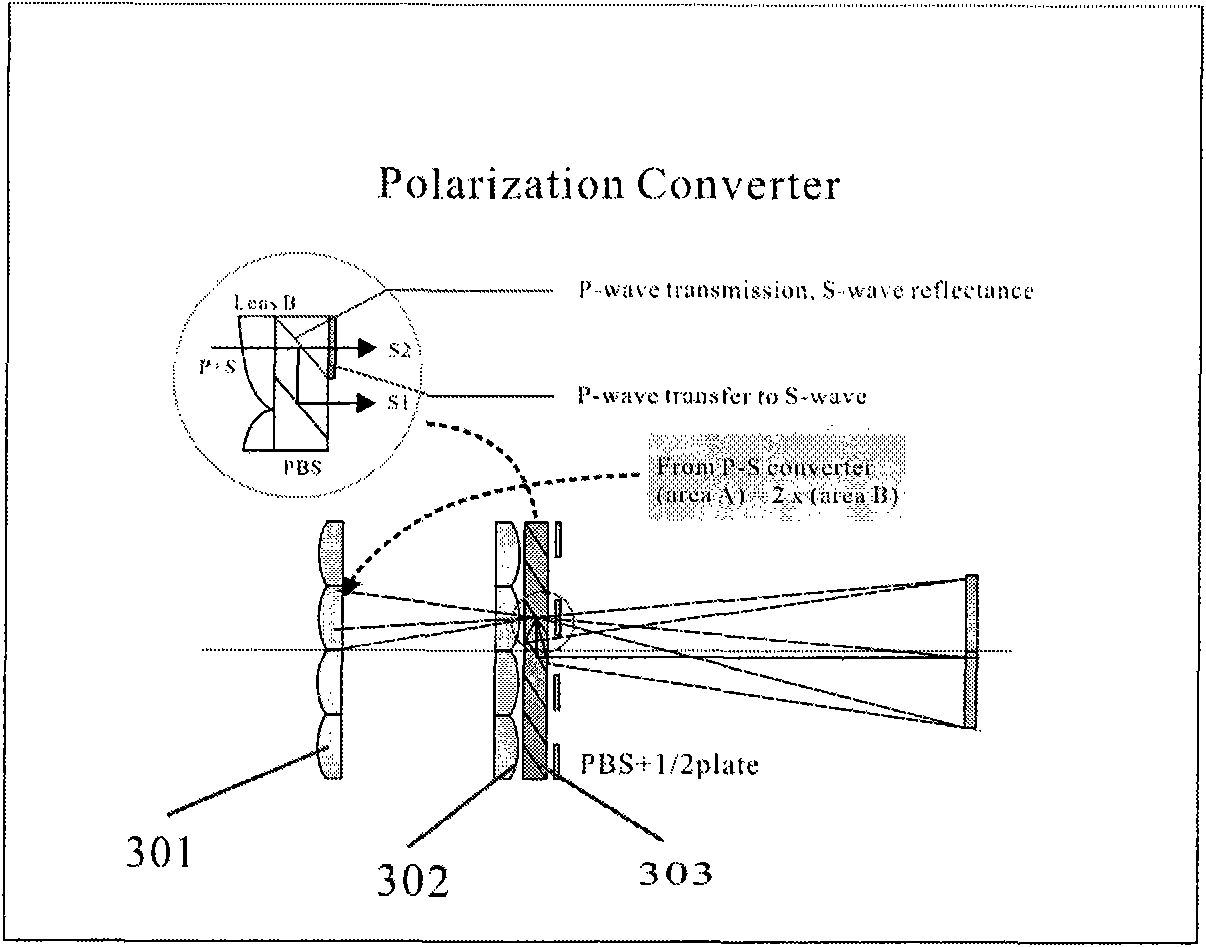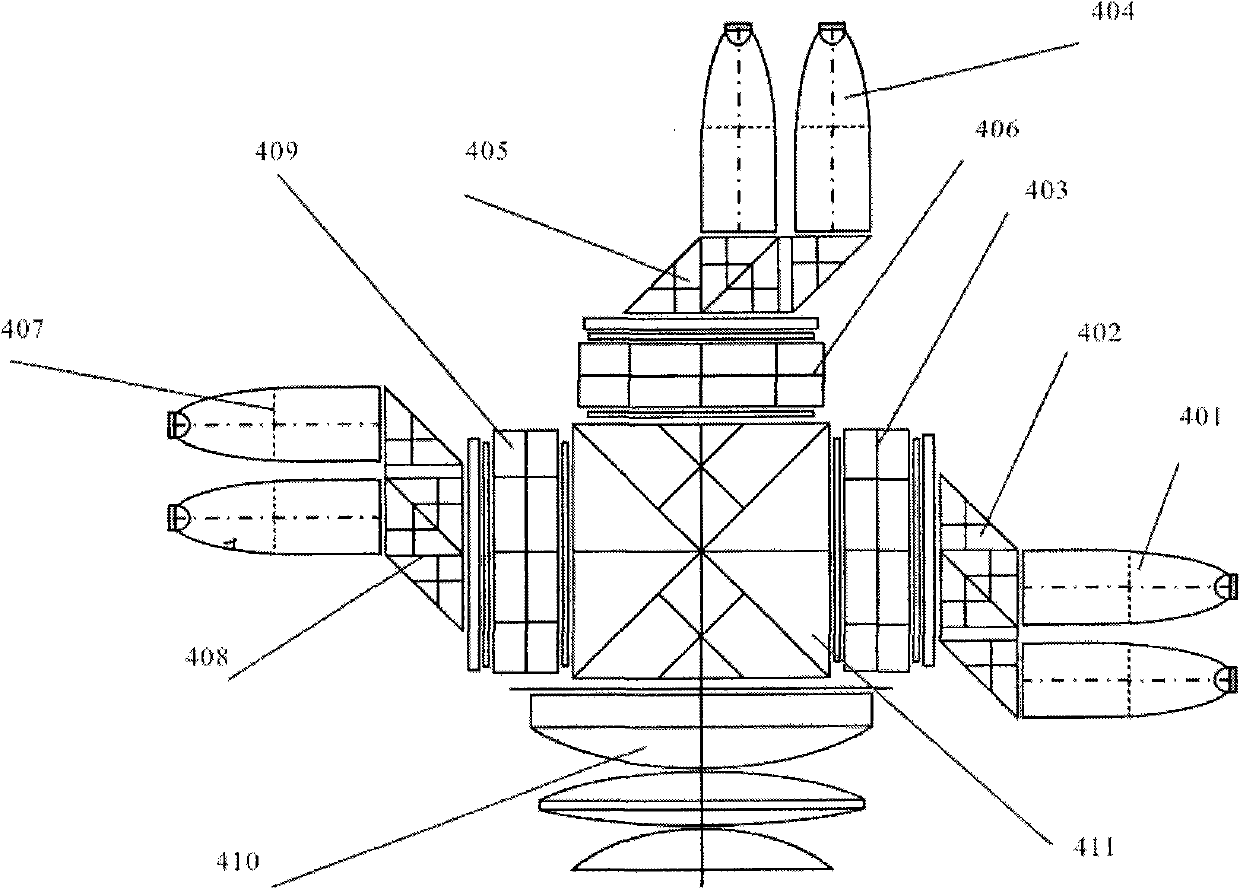Optical engine for time-sharing work of P and S light
An optical engine and time-sharing technology, applied in the field of optical engines, can solve the problems of unfavorable brightness improvement and unfavorable light utilization rate of projector brightness improvement, and achieve the effects of comprehensive performance, improved light utilization rate, and improved brightness.
- Summary
- Abstract
- Description
- Claims
- Application Information
AI Technical Summary
Problems solved by technology
Method used
Image
Examples
Embodiment Construction
[0015] The present invention will be described in detail below in conjunction with accompanying drawing: figure 2 As shown, the present invention has at least two light sources, wherein at least one light source is converted into S light, and other light sources are converted into P light, and P light and S light enter the imaging LCD light valve modulator 108 in time division, and the imaging LCD light valve The modulator 108 makes the P light and the S light incident on the film inspector 109 through image processing, and can present the same plane or stereoscopic image.
[0016] The at least two light sources are converted elements 103, 104 and 105, 106 through at least two PBS conversion mechanisms, and the etendue after conversion remains unchanged, that is, the P light or S light emitted by the two light sources is Output within the same plane area. The at least two light sources include LED101, 102 or laser semiconductor light source or VHP or metal halide light sourc...
PUM
 Login to View More
Login to View More Abstract
Description
Claims
Application Information
 Login to View More
Login to View More - R&D
- Intellectual Property
- Life Sciences
- Materials
- Tech Scout
- Unparalleled Data Quality
- Higher Quality Content
- 60% Fewer Hallucinations
Browse by: Latest US Patents, China's latest patents, Technical Efficacy Thesaurus, Application Domain, Technology Topic, Popular Technical Reports.
© 2025 PatSnap. All rights reserved.Legal|Privacy policy|Modern Slavery Act Transparency Statement|Sitemap|About US| Contact US: help@patsnap.com



